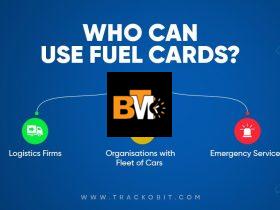Packaging solutions are critical for ensuring that products are secure, intact, and ready for transport. However, many businesses face the challenge of choosing between different packaging methods, such as banding and strapping. While both offer valuable benefits, understanding their unique applications can help you make a more informed decision.
If you’re looking for packaging solutions that ensure reliability, efficiency, and speed, understanding the right machinery and methods is key. For instance, the best semi automatic strapping machines are often preferred in environments that require high-speed sealing without compromising on quality. This blog will explore the key differences between banding and strapping, helping you determine which is best suited for your packaging needs.
Banding vs. Strapping: What’s the Difference?
At first glance, banding and strapping may seem similar, but they have distinct differences in their application and functionality. Both are used to secure products, but the materials, techniques, and specific uses vary.
- Banding: This method uses a flexible material, such as plastic or metal bands, to hold items together. Banding is ideal for lightweight packages or when products need to stay in a fixed position without heavy restraint.
- Strapping: Unlike banding, strapping involves using a stronger material to secure larger, heavier items. Strapping is perfect for stabilizing heavy pallets, crates, or boxes during shipping or storage.
Understanding these differences is essential when determining the right application for your business needs, whether you’re handling lightweight items or heavy-duty products that require added security.
How Does Banding Work?
Banding is a simple yet effective technique. It typically involves a soft, flexible band that wraps around a product or group of products. The band is secured in place with a machine or manually, depending on the equipment used. This method is ideal for lightweight products, such as bundles of cardboard, textiles, or retail goods that need to be grouped together without the risk of damage or shifting.
- Flexible Material: Banding often uses plastic bands or metal bands that are lightweight and easy to handle. The flexibility of these materials allows for quick and secure bundling of products, making it a great option for high-volume packaging. The material is also highly customizable to fit the specific needs of the product being packaged.
- Ideal for Lightweight Products: Banding is more suited for bundling smaller, lightweight items like bundles of paper, cardboard, or retail products. It helps in grouping products together while maintaining a neat and organized presentation, which is important for both storage and retail purposes.
- Quick and Easy: Banding requires minimal time and effort, making it an ideal choice for high-volume packaging where efficiency is a top priority. This method is quick to set up, cost-effective, and ideal for fast-paced production lines or environments where speed is critical.
Banding is commonly used in industries such as food packaging, retail, and small parts manufacturing, where products need secure bundling but don’t require the heavy-duty strength of traditional strapping.
Understanding Strapping
Strapping, on the other hand, is a more robust solution. It involves using high-tensile materials, such as polyester or polypropylene, to firmly secure heavy items. Strapping is typically used in industries where the stability and safety of the packaged goods are crucial.
Unlike banding, which is primarily about organizing products, strapping is designed to prevent any movement, ensuring that the items remain intact during transportation and handling.
- Stronger Materials: Strapping is made from polyester, polypropylene, or steel, offering superior strength for heavy-duty applications. These materials are more resistant to stretching and breaking under pressure, making them perfect for securing large and heavy loads.
The tensile strength of strapping ensures that the product remains in place, even during rough handling or long-distance shipping.
- High-Tension: Strapping ensures that products are tightly secured, preventing any movement during transport. Unlike banding, which may not withstand extreme pressure, strapping maintains its tension, providing a much more secure hold on products that require extra care.
- Best for Heavy Items: It’s commonly used for large packages, palletized goods, and products that undergo heavy handling. Strapping is crucial when products need to be secured tightly to prevent damage or movement during transport, ensuring the load remains intact.
Strapping is a must-have in sectors like logistics, warehousing, and manufacturing, where the safety of products during transit is paramount. It’s especially useful when transporting products that are heavy, large, or fragile.
When to Choose Banding
While banding may not offer the same strength as strapping, it has its place in the packaging world. Banding is ideal for businesses that deal with lightweight or non-fragile items. Here’s when banding works best:
- When Items Need Light Restraint: If you’re packaging lightweight products like bundles of paper, textiles, or small retail goods, banding can keep everything neatly in place without over-engineering the packaging process. The lightweight nature of banding ensures that your packaging doesn’t add unnecessary bulk or weight to the products.
- For Quick Packaging: Banding is ideal in fast-paced environments where speed is essential, and the packaging needs to be done quickly and with minimal manual labor. Because the setup is simple and the materials are easy to work with, banding is a great option for businesses with high-volume packaging needs.
- Reduced Costs: Banding uses less expensive materials and requires less effort, making it a cost-effective option for industries that don’t require heavy-duty packaging. It’s a budget-friendly solution that provides just the right amount of security for non-heavy-duty applications.
When to Choose Strapping
Strapping, being stronger and more secure, is the go-to choice for industries that handle heavy or fragile goods. It ensures that products don’t shift during transportation, minimizing the risk of damage. Here are the scenarios where strapping is the best option:
- Heavy-Duty Packaging Needs: When securing heavy pallets, large boxes, or industrial materials, strapping offers the necessary strength and stability to ensure the items don’t move or get damaged during transport. Strapping is more effective for securing large items, ensuring their stability throughout the shipping and handling process.
- Handling Fragile Items: Strapping helps to keep fragile products in place, ensuring they don’t break or get damaged during transport. This is particularly important for items that require a high level of protection, such as glass products, electronics, or machinery parts.
- Storage and Long-Distance Shipping: If you’re storing goods for long periods or shipping them over long distances, strapping ensures your items stay secure throughout the process. The high-tension nature of strapping reduces the likelihood of products shifting or becoming damaged during long-haul shipments.
Strapping is most commonly used in industries such as logistics, automotive, and manufacturing, where the safety of products during transit is critical.
Key Factors to Consider for Your Packaging Needs
Choosing between banding and strapping ultimately depends on your packaging requirements. Here are a few factors to consider when making the decision:
- Product Weight: For lightweight products, banding will suffice. For heavy-duty or industrial items, strapping is your best bet. Understanding the weight of your products will help determine whether the more flexible banding or the stronger strapping is required.
- Storage and Handling Conditions: If your products will be handled roughly or stored for extended periods, strapping offers the added security needed to prevent shifting and damage. Banding may not provide the same level of support under heavy handling or long storage times.
- Speed and Efficiency: Banding may be faster and easier for high-volume packaging, but strapping machines are designed to handle larger workloads with more precision. Efficiency is crucial, so choose a solution that complements your production line and delivery schedules.
Conclusion
Both banding and strapping offer distinct advantages for various packaging requirements. The key is understanding the material, strength, and speed you need for your specific packaging operations. If you’re working with lightweight products that need quick and easy bundling, banding might be your ideal choice.
However, if your products are heavier, need more secure packaging, or will be handled more roughly, strapping is the way to go. As businesses continue to grow and packaging demands increase, investing in the right machinery, whether it’s banding or strapping equipment, will ensure that your products are packaged securely, efficiently, and cost-effectively.










Leave a Reply